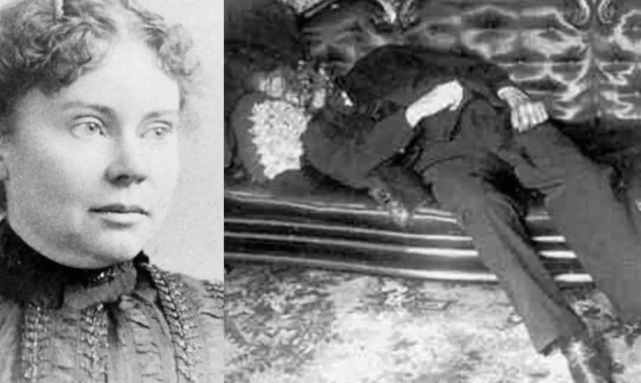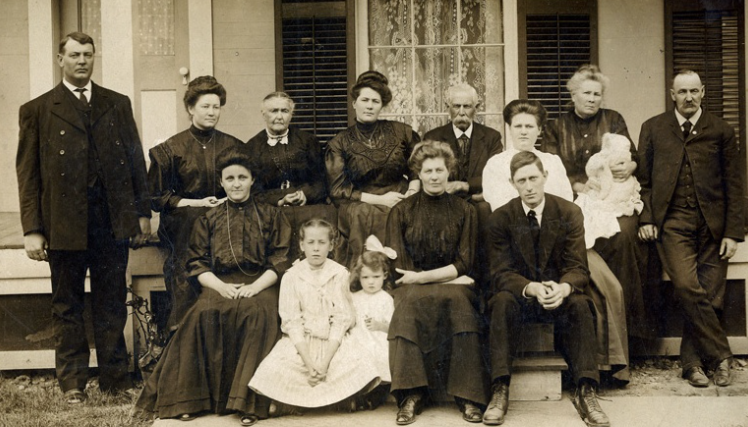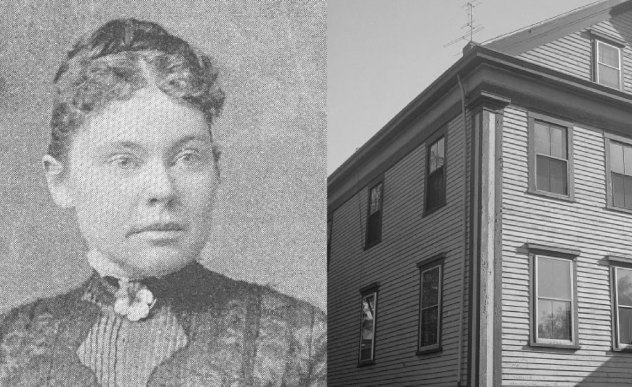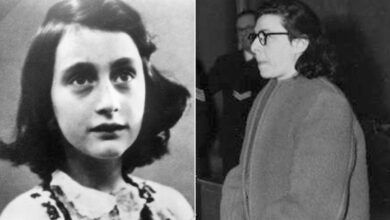Lizzie Borden Took an Ax… But Did She Really? The True Story

Lizzie Borden Took an Ax… But Did She Really? The True Story
Few American murder cases have captured the public imagination as enduringly as the brutal 1892 killings of Andrew and Abby Borden in Fall River, Massachusetts. At the center of this real-life gothic mystery was a seemingly prim and proper 32-year-old woman named Lizzie Borden. She would soon become the prime suspect in the savage double homicide of her father and stepmother—crimes that would lead to one of the most sensational trials in American history.
The rhyme that still echoes in pop culture—”Lizzie Borden took an ax, and gave her mother forty whacks…”—has cemented her infamy. But behind the chilling verse lies a case full of ambiguity, societal prejudice, and unanswered questions. More than a century later, the question remains: did Lizzie Borden really commit the murders, or was she a scapegoat of circumstance and gender bias?

The Setting: A Victorian Household in Conflict
The Borden family lived in a modest but respectable home at 92 Second Street in Fall River. Andrew Borden, a wealthy businessman, was known for his frugality despite his wealth. His second wife, Abby, had a strained relationship with Lizzie and her older sister, Emma. The Borden household was one of tension, where inheritance disputes, emotional rifts, and long-simmering resentment seemed ever-present.
Lizzie, who had remained unmarried into her thirties (unusual for the era), was known in the community as a churchgoer and volunteer. Her public demeanor was one of virtue, yet privately, many believed she harbored deep-seated resentment toward her stepmother and father. According to reports, Lizzie believed her stepmother married Andrew for his money and feared she would inherit the family wealth.
The Murders: A Summer Morning Turns Deadly
On the morning of August 4, 1892, the quiet town of Fall River was rocked by news of a gruesome double murder. At around 11:10 AM, Andrew Borden was found slumped on the sitting room couch, his face nearly destroyed by repeated blows. His wife Abby had been discovered upstairs earlier, lying face-down in a pool of blood in the guest bedroom, having received numerous strikes to the head with a sharp object. It would later be determined that she died an hour or more before Andrew.
The crime scene was horrifyingly brutal, even more so by the standards of the time. Police estimated that Abby had been struck at least 18 to 19 times, while Andrew had endured around 11 fatal blows, some of which had split his face in two.
The weapon was suspected to be a hatchet or ax, though no bloodied murder weapon was conclusively identified at the scene. A broken hatchet was found in the Borden basement, but it lacked blood or tissue. Strangely, there were no signs of forced entry, no robbery, and no clear motive—except one that could come from within the household.

The Prime Suspect: Lizzie Under Suspicion
Within hours, suspicions began to turn toward Lizzie. She had claimed to be in the barn at the time of the murders, searching for lead sinkers for a fishing trip. However, her alibi was shaky, and investigators noted several inconsistencies in her story. For example, she claimed to have heard nothing during the attack, even though the murders occurred in close proximity within the house.
More troubling was her behavior in the days following the murders. Lizzie was reportedly calm, even poised, and at times oddly unemotional. She burned a dress that she claimed had been stained with paint, though police believed it may have had blood on it. Adding to suspicion, the maid Bridget Sullivan—who had been in the house at the time—testified that Lizzie was the only other person known to be present during both murders.
Despite the suspicions, police failed to act quickly. They did not thoroughly search the home until days after the murders, and evidence collection was primitive by modern standards. Lizzie was not arrested until August 11, a week after the murders.
The Trial: Justice or Gender Bias?
Lizzie Borden’s trial began on June 5, 1893, and drew massive public attention. Reporters from across the country flocked to the courtroom. The idea of a well-bred woman standing trial for such a violent act fascinated Victorian America. Many in the public simply could not believe that a woman—especially a middle-class churchgoer like Lizzie—could commit such a heinous crime.
Her defense team, led by former Massachusetts Governor George D. Robinson, capitalized on this sentiment. They painted Lizzie as a loving daughter who could never have murdered her parents, emphasizing her refined demeanor and religious devotion.
Key evidence was undermined by the defense. For instance:
-
The hatchet found in the basement was not definitively linked to the murders.
-
No bloodstained clothing was ever found on Lizzie.
-
Witnesses testified that she had shown no signs of agitation before or after the crime.
The prosecution, on the other hand, struggled to present direct evidence linking Lizzie to the murders. Forensic science was in its infancy, and much of the case rested on circumstantial evidence and speculation.
After just over an hour of deliberation, the jury returned a verdict: Not Guilty. Lizzie Borden was acquitted of all charges.
Life After the Trial: Freedom in Isolation
Though legally free, Lizzie Borden never escaped the cloud of suspicion. After the trial, she and her sister Emma inherited a considerable sum from their father’s estate and moved to a large home in a more affluent neighborhood of Fall River, which they named “Maplecroft.”
Despite her attempts to rejoin society, Lizzie remained socially ostracized. She lived the rest of her life as a recluse, frequently the subject of gossip and whispers. Emma eventually moved out of their shared home in 1905, allegedly after an argument related to Lizzie’s behavior or social activities.
Lizzie Borden died on June 1, 1927, at the age of 66, still shrouded in mystery and public suspicion.

Theories and Speculations: Who Really Killed the Bordens?
To this day, historians and true crime enthusiasts continue to debate the case. Several alternative theories have emerged:
1. Lizzie Did It
This remains the most commonly held theory. The motive: financial and emotional resentment. With both parents dead, Lizzie and Emma stood to inherit the estate. Her inconsistent alibi, the destruction of a dress, and opportunity all support this conclusion.
2. Bridget the Maid
Bridget Sullivan, the Borden maid, was reportedly ordered to wash windows on the hot day of the murders—something she resented. Some speculate she may have snapped and killed Abby in a rage, then panicked and killed Andrew to cover it up.
3. A Mysterious Intruder
A less supported theory suggests an unknown assailant entered the house and committed the murders. However, there was no evidence of forced entry, and it seemed implausible someone could enter, kill both victims, and escape unnoticed in broad daylight.
4. Emma Borden
Although Emma had a solid alibi—she was out of town—theorists have occasionally speculated she could have had involvement or knowledge of a conspiracy, perhaps helping cover up for Lizzie.
Legacy and Pop Culture
Lizzie Borden’s case remains a cultural phenomenon. Her story has inspired countless books, films, plays, and even an opera. The most well-known is probably the 2014 Lifetime movie Lizzie Borden Took an Ax starring Christina Ricci, which dramatizes the events in a stylized fashion.
The Borden house is now a bed and breakfast and museum, where curious visitors can stay overnight in the rooms where the murders took place.
The eerie nursery rhyme has ensured Lizzie’s story remains embedded in the American psyche:
“Lizzie Borden took an ax…”
But as the second half of that sentence suggests: Did she really?
Conclusion: Justice or Misjudgment?
Over a century after the events of that summer morning in 1892, the mystery remains unsolved. Lizzie Borden was never convicted, and no one else was ever charged. She may have been a murderess who escaped justice—or a wrongly accused woman punished by public opinion and societal expectations.
What is certain is that the Lizzie Borden case was about far more than a murder—it was a collision of gender, class, law, and media in an era just beginning to reckon with modern crime.
And in the end, the true story is not just about whether she took the ax, but whether the world was ever ready to believe she could.





